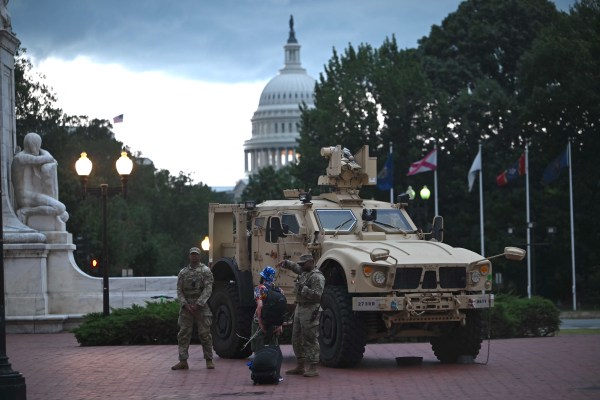On July 12, a U.S. airstrike in northwest Syria killed the leader of ISIS in Syria, Maher al Agal, and seriously injured another senior leader. The strike is the latest blow against ISIS, which is under significant pressure from U.S., Iraqi, Syrian, and Turkish counterterrorism operations. At least five top leaders have been captured or killed since October 2021, whittling away at the core cadre. President Biden’s statement on the operation rightly praises the diligent work of the U.S. military and intelligence community in degrading ISIS capabilities. But he adds the strike “also demonstrates that the United States does not require thousands of troops in combat missions to identify and eliminate threats to our country.”
The problem, Mr. President, is that Syria is not Afghanistan.
America’s ability to target terrorists in Syria has never been in question, but nearly one year after the calamitous withdrawal, whether the United States can keep the terrorism threat from Afghanistan in check is. The veiled defense of the White House’s so-called “over-the-horizon” posture for Afghanistan ignores key differences between the two countries.
The over-the-horizon counterterrorism approach that the White House touts for Afghanistan replaces on-the-ground human networks with signals and satellite intelligence to know what terrorists are planning and where they are operating and relies on drone strikes instead of special forces to target terrorists. While U.S. capabilities are exquisite, the approach inherently makes counterterrorism operations more difficult. Afghanistan’s remoteness and the absence of any regional U.S. bases or robust counterterrorism partnerships adds to the challenge.
America’s presence and partners are crucial to its counterterrorism successes in Syria. Roughly 900 U.S. forces advise and support the Kurdish-led Syrian Democratic Forces (SDF), which formed to combat ISIS in 2015, in the northeast. Deputy Assistant Secretary for Defense for the Middle East Dana Stroul emphasized the role of U.S. partners on the ground in enabling strikes targeting ISIS in Syria. “What we’re doing today is we’ve achieved such an op-tempo of intelligence, which we turn into operations, which we cannot do without the SDF,” she said. “We cannot move, we cannot learn from the local community what they see, which informs the pace of our counterterrorism operations.”
The U.S. has a noncombat military presence, local partners, and regional basing to support operations in Syria. None of these exist in Afghanistan.
Unlike in Syria, the terror threat is trending the wrong way these days. The Islamic State has strengthened over the past year in Afghanistan as it leads an insurgency against the de facto Taliban government. The group’s reach has also expanded with recent attacks in Pakistan, Uzbekistan, and Tajikistan. Deteriorating conditions in Afghanistan, driven in part by the collapsing economy and the Taliban’s inability to govern, enlarge the Islamic State’s potential recruiting pool. Meanwhile, the Taliban’s current restrictions on al-Qaeda—minimal as they are—will probably loosen in the coming years.
Though assessments still finger 2023 as the earliest for either terror group to be able to conduct transnational attacks targeting U.S. interests, the timeline for the U.S. generating any of the components to support robust counterterrorism operations in Afghanistan is much longer.
Geopolitical realities in Central Asia—namely, strong Russian influence—almost certainly preclude even limited basing. Yet deepening security relationships with Afghanistan’s neighbors could create opportunities for counterterrorism partnerships that would enrich U.S. intelligence on Afghanistan or help contain terror networks through better border security. Such relationships require sustained, senior-level engagements from the U.S. These are just beginning. The head of US Central Command, Gen. Erik Kurilla, toured Central Asian states on the heels of Assistant Secretary of State for South and Central Asian Affairs Donald Lu in June.
To date, the U.S. military has not conducted a strike inside Afghanistan since the August withdrawal. The absence of action does not necessarily mean the United States has no intelligence on the threat. Inaction could be a decision, either to provide the Taliban space to act against the threat or to protect intelligence sources. Senior officials have rightly kept discussions on whether the U.S. has the targeting intelligence behind closed doors.
But what is clear is the over-the-horizon counterterrorism approach to Afghanistan is not comparable to Syria or anywhere in the world where the United States has targeted terrorists. Everywhere else, the US military has a limited presence, working directly with partners on the ground and using nearby drone basing to enable sustained counterterrorism pressure on al-Qaeda and Islamic State networks. While thousands of combat troops may not be necessary, the current over-the-horizon counterterrorism posture lacks the known ingredients for success in Afghanistan.







Please note that we at The Dispatch hold ourselves, our work, and our commenters to a higher standard than other places on the internet. We welcome comments that foster genuine debate or discussion—including comments critical of us or our work—but responses that include ad hominem attacks on fellow Dispatch members or are intended to stoke fear and anger may be moderated.
With your membership, you only have the ability to comment on The Morning Dispatch articles. Consider upgrading to join the conversation everywhere.